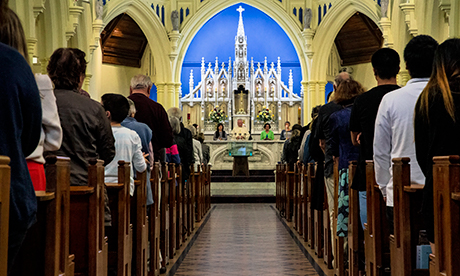We are entering truly unprecedented times for people of faith. Churches, synagogues, and mosques around the world have suspended regular worship services for an indefinite period of time.
This coming weekend may represent the fewest people engaging in corporate worship in the last two millennia.
This is uncharted waters for those in church leadership.
Many pastors and denominational leaders have struggled with questions related to the immediate concerns facing the church.
Issues like: How do we take our service online? or How do we take care of the elderly and vulnerable members of our faith community?
While it’s key that pastors do their best to tackle these immediate concerns, at some point thoughts may begin to drift further out.
It’s crucial that pastors begin to think about the long term.
Specifically, is COVID-19 going to lead to a long-term shift in church attendance?
Survey data related to an event like this doesn’t exist
This weekend represents the fewest people engaging in corporate worship in the last two millennia. Many pastors are struggling with what they cannot control; the unknown.
In order to take an educated guess at what the future may hold, we can work with the next best thing—panel data.
A panel survey asks the same people the same series of questions over a long period of time as a means to detect how behaviour shifts and to identify the possible causes of those changes.
I have panel data that was collected in 2010, 2012, 2014. It offers an illuminating glimpse into how church attendance changes over time.
The first impression from the graph is that there is a lot of shifting in church attendance in just two-year periods.
Many people changed their frequency of church attendance from 2010 to 2012 and then changed their behaviour again by 2014. There are portions of the population that are more consistent, however.
The thick blue bands on the right side of the graph indicate the lack of movement among people who never attend church services. When people are out of church, they are unlikely to return. Note also that the size of the never attenders increased over a four-year period of time.
There are also thicker bands of movement among those who attend church weekly or more than once a week. That indicates a general sense of stability—frequent attenders don’t alter their behaviour, either.
The overall shifts come into starker relief when just observing the changes from 2010 to 2014. The rows going down the left side of the above graph are individuals’ self-reported church attendance in 2010 and the size of the bars going left and right indicate where those groups ended up in 2014. Continue reading
